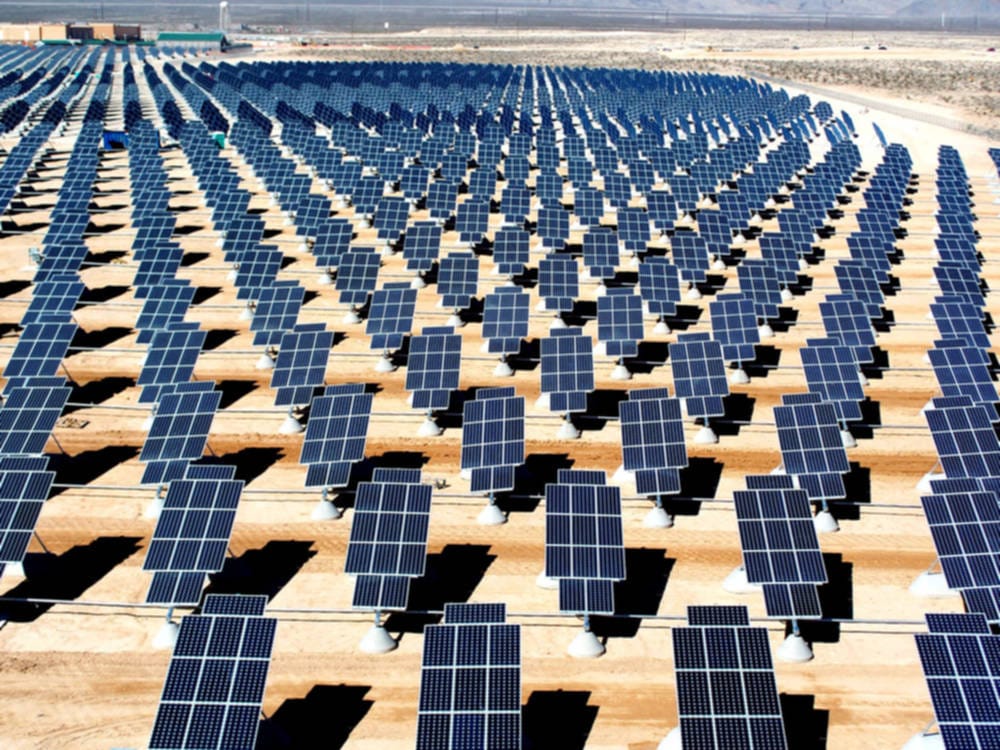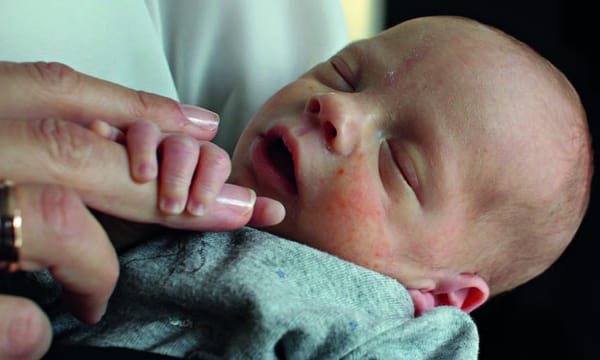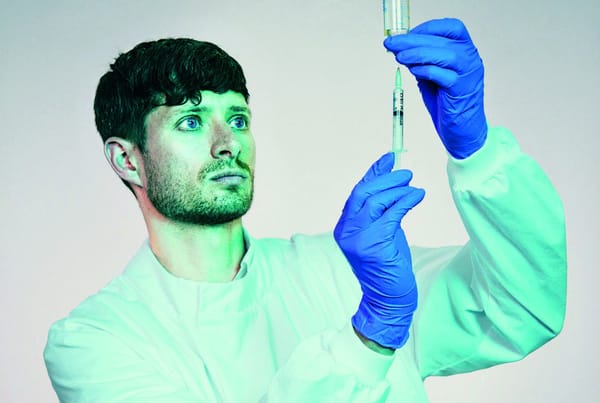Professor Keith Barnham talks about his vision for the future of solar energy
“If we could produce our own, free, solar fuel on our rooftops, we could use it in fuel cells to power cars. You’d have free mileage for life.” James Bezer talks to Professor Keith Barnham about his vision for the future of solar energy

James: You originally started your career in particle physics—why did you change to researching solar panels?
Prof. Barnham: I loved particle physics: I worked at CERN and Berkeley and it was very exciting at both places.
When I joined Imperial, I spent much of my time at CERN. Collaborations were getting bigger and bigger and it hit me that I would have to spend more of my time in Geneva. We used to bring bubble chamber film back to Imperial for analysis, but as the beam experiments built up, you had to spend more of your time there. Did I want to keep commuting to Switzerland, instead of working and teaching at Imperial?
And how useful was particle physics—it was fascinating, but what practical use is was it in a world with a lot of problems?
Photovoltaics have historically been expensive and inefficient, but this has improved a lot in recent years. What technological advances have made this possible?
It’s because of the fall in the cost of silicon, by around a factor of four. This wasn’t technical, though, but political. The Germans decided to stimulate demand with a feed-in tariff. They hoped this would build the market, causing mass production and a fall in price.
That happened, but it was a big surprise that EU and US industries didn’t invest as much as the Chinese. They made a political decision to put money into big systems, initiate mass production: that’s where the drop in cost really came from, to the detriment of EU production and my own company.
You group created the most efficient solar cells in the world. What was novel about your design?
It’s very different technology to other photovoltaics. Ours is based on Gallium Arsenide semiconductors, which most resembles the technology in mobile phones. There’s at least one such chip in everyone’s mobile phone.
First you have three cells grown on top of each other by the same techniques used to make LEDs. The three cells are arranged to make best use of the solar spectrum. The first has a very wide band gap, so it only absorbs high-energy blue-green light. Red and orange go through to the second cell where they are absorbed. Low-energy infra-red passes all the way down to the bottom layer.
Each photon gets absorbed in the appropriate sub-cell. It’s the goldilocks principle: each cell is just right for the photons they absorb.
The three cells are then put together in series: the voltage adds up, giving a very high efficiency of over 40%.
To make this very efficient, you want to optimize the band gap of each cell. Our technology, uniquely, uses quantum wells to adjust the band gap, by changing their depth. 50 of them in our photovoltaics enables us to adjust the band gap and optimize highly efficient cells for different spectral conditions. It’s the same principle behind all lasers: that’s how you make them emit different colours.
Currently, solar cells are often used in deserts, where there’s plenty of sunlight. The spectrum in the UK is very different from in the desert, though: we have a redder sun, more cloud and diffuse blue light. In the future we could generate electricity using smart windows by putting photovoltaics on blinds. This would have a different light spectrum again, that we could optimize our cells to.
Ultimately it could be used with lenses to concentrate light onto the system, and with high enough concentration, our technology could be even cheaper than conventional Chinese-made silicon devices.
With quantum wells, we can optimize the cell for different spectral conditions.
The whole idea is just solving the Schrodinger equation for a square well: the first, simplest quantum mechanics problem we teach to physics students and here’s a practical application of it. What I really like about it is that the simplest part of quantum mechanics has practical applications in solving global warming.
How do your cells compare to other technologies like plastic electronics?
I would say they’re complimentary. They’re all great areas that should be researched. Ours offers three times the energy for the same area of cells. That doesn’t matter in the desert because space is cheap. However, it could be useful in applications like replacing petrol in cars, where getting three times the energy for the same area is very useful. Technology similar to ours with high efficiency and a 25 year lifetime has proved itself in satellites, for example, where they need every bit of power they can get for the minimum area.
Plastic cells should be cheap, but they too have run into problems. Plastic efficiencies are not even comparable to silicon. Silicon has become very cheap now: well over half the price of a rooftop system is installation. The other problem that plastic has is that it doesn’t last as long as conventional PV systems.
The Chinese intervention is great news for first generation silicon cells, as it has driven down the costs enormously, but bad news for my company and for plastic electronics. Although we had efficiency, our investors decided to sell us to an American conglomerate, because we just couldn’t produce the technology cheaply enough to compete with the Chinese.
Do you think that using sunlight to produce fuels has a complementary role alongside other photovoltaic technologies?
We’ve seen already that electric cars can be powered by silicon photovoltaics: there’s enough sunlight to power a car for an average domestic mileage.
But that means the car can only be used when the sun is shining.
What you really want to be able to do is store that much energy from highly efficient photovoltaics on the roof of your house that match the electricity needs of your house, plus some extra to power a car.
The obvious way to store it is as fuel.
There’s enough sunlight hitting a rooftop to capture carbon dioxide and turn it into methanol. Hydrogen is easier to make, and buses run on it already, but I think for home use, methanol would be better because it’s safer.
The American Physical Society thinks it can’t be done, but I refute their pessimism. Firstly: nature does it pretty well. Plants do it to make sugars with about 2% efficiency, but I think it should be possible to do it better, as there are lots of physicists and engineers looking into exactly this.
There’s a group at ETH Zurich working on nanostructure filters. They take in carbon dioxide through the filter at room temperature and heat it up to 90°; this then desorbs the CO2 letting you store it at concentrations up to 99% . In the next couple of years, we’ll be able to use this technology to produce methanol with CO2 straight from the atmosphere.
Chemical engineers are working on an electrochemical cell, which uses photons to produce hydrogen. You can do it easily by shining light on catalysts to speed up the reaction.
If we could produce our own, free, solar fuel on our rooftops, we could use it to power cars. You’d have free mileage for life.
Is solar power really reliable enough to use as our main energy source?
The Germans did a very important experiment in 2007 called Kombikraftwerk. It took the equivalent electricity demand of a small town and met 100% of it with renewables at all times. It showed that over a year, 70% of German demand could be met by wind and photovoltaics, with 25% from biogas and only 5% from storage.
The output from nuclear power stations has to remain constant: day, night, summer, winter.
As I discuss in my book, wind power output in the UK is, on average, much higher than in Germany. If the test were run here, around 78% of demand could be supplied from wind and photovoltaics.
There’s also another very important point against nuclear power.
Offshore wind and PV are rising faster than mobile phones did when they first took off. If you extrapolate it, we could have far more PV and offshore wind than nuclear by the time the new Hinckley Point turns on. If we do what we can do with PV and wind, nuclear will be a complete irrelevance, but only if we invest in subsidies for renewable rather than nuclear.
Does your house have photovoltaics?
Yes! I’m extremely pleased with them. This point about what happens when the sun doesn’t shine: our excess (and we often have it) is stored in our hot water tank. Between March and October, we don’t use gas: all or hot water comes from excess solar. So the message that you will sometimes hear that we can’t store solar energy except at great expense is completely wrong.
Another point is that we have it on an East-West side. It generates as much as if it were ideally positioned on a south facing roof. We’re actually saving even more on our electricity bill, because the sun is shining more often when we’re using it.
In the future, concentrated photovoltaics could track the sun throughout the day, so you always get the maximum light intensity on the solar panels. I calculated that using concentrators with high efficiency cells, we could generate around 90% more energy over the year.
I’ve also signed up to Good Energy, an all-renewable electricity supplier. All our excess power goes back to the grid, which I can borrow back later. If you can’t get a rooftop system, switching to Good Energy is a good thing to do.








